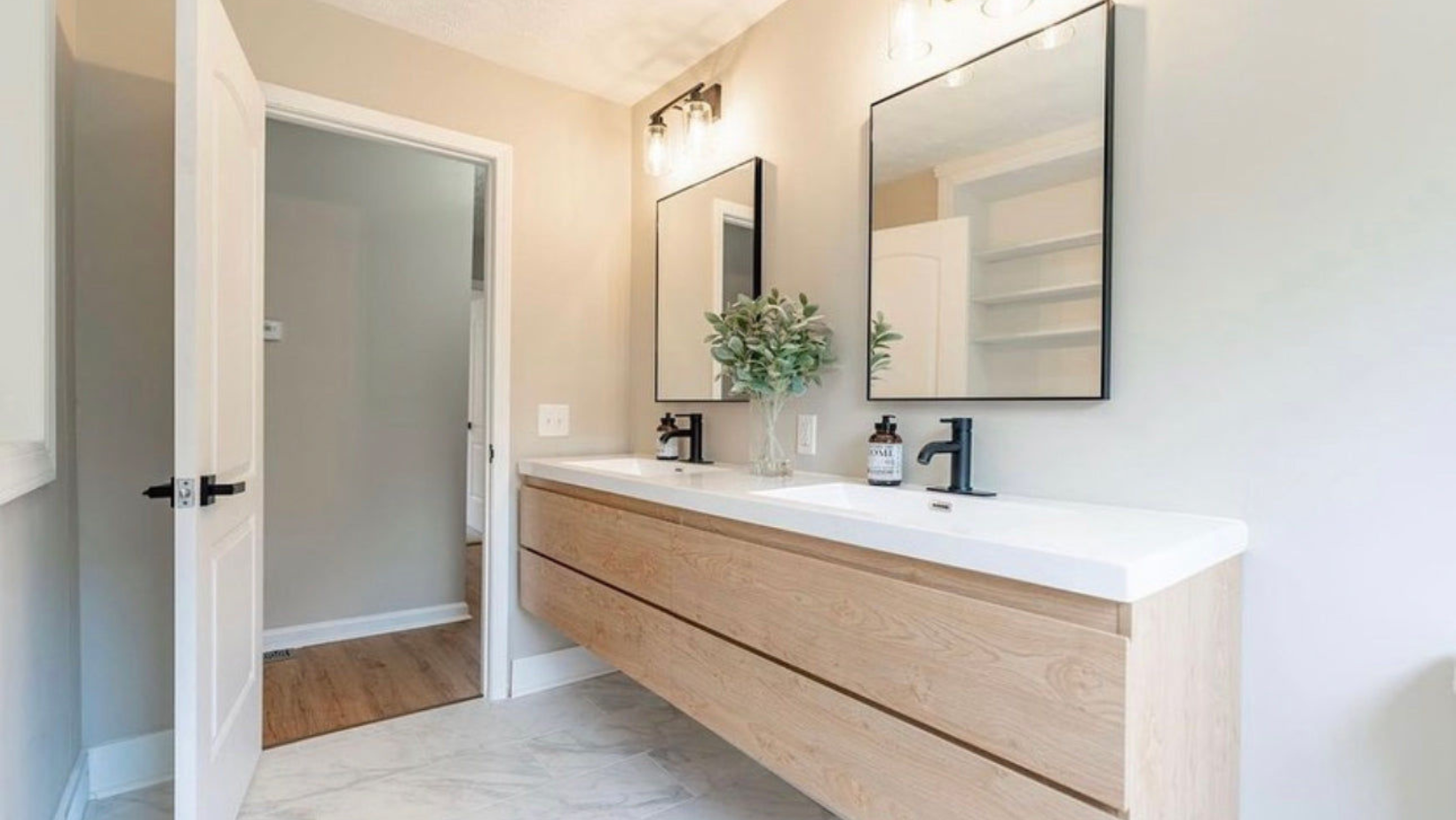Bathroom Vanity with Floor Drain

A bathroom vanity with a floor drain offers a practical and stylish solution for modern bathrooms, enhancing both functionality and aesthetics. This comprehensive guide delves into the purpose, benefits, types, and considerations for selecting the perfect floor drain for your bathroom vanity.
Types of Floor Drains
Floor drains come in various types, each offering distinct advantages and disadvantages. Understanding these differences is crucial for choosing the right drain for your bathroom vanity.
- Linear Drains: Linear drains are long, narrow drains typically installed along the wall or in the center of the shower floor. They provide a sleek, modern aesthetic and offer excellent water drainage.
- Traditional Drains: Traditional drains are round or square drains commonly found in older bathrooms. They are readily available and offer reliable drainage, but their appearance may not be as contemporary as other options.
- Tile-Inset Drains: Tile-inset drains are designed to be seamlessly integrated into the tile floor, creating a minimalist and elegant look. They are typically more expensive than traditional drains but offer a refined and unobtrusive design.
Choosing the Right Floor Drain Size and Style
The size and style of your floor drain should complement the overall design of your bathroom vanity and the space available.
- Size: The size of the floor drain should be adequate to handle the water flow from your bathroom vanity and prevent water from backing up.
- Style: The style of the floor drain should complement the overall design of your bathroom vanity. For a modern bathroom, a linear or tile-inset drain may be a good choice, while a traditional drain might be more suitable for a classic bathroom design.
Design Considerations for Bathroom Vanities with Floor Drains: Bathroom Vanity With Floor Drain

Integrating a floor drain into a bathroom vanity design presents a unique set of considerations. This design element can enhance functionality and aesthetics, while requiring careful planning to ensure proper drainage and seamless integration.
Incorporating a Floor Drain into the Design, Bathroom vanity with floor drain
Incorporating a floor drain into the design of a bathroom vanity requires careful planning to ensure proper drainage and seamless integration. Here are some key aspects to consider:
- Location: The drain’s location should be strategically chosen to facilitate water flow and prevent any potential clogging. Ideally, it should be positioned at the lowest point of the vanity’s base, ensuring a natural slope for water to drain effectively.
- Size and Shape: The size and shape of the drain should be appropriate for the volume of water expected to drain. Consider the vanity’s size and the potential for spills or leaks. A larger drain can accommodate greater water flow, while a smaller drain may suffice for smaller vanities.
- Materials: The drain’s material should be durable and resistant to corrosion and wear. Stainless steel, brass, and PVC are popular choices for their longevity and resistance to moisture.
- Aesthetics: The drain’s design should complement the overall style of the bathroom vanity and fixtures. Consider finishes, such as polished chrome, brushed nickel, or oil-rubbed bronze, to match the other elements in the space.
Maximizing Storage Space and Functionality
A floor drain in a bathroom vanity can present both challenges and opportunities when it comes to maximizing storage space and functionality. Here are some ideas to consider:
- Open Shelving: Open shelving around the drain can provide ample storage for towels, toiletries, and other items. Consider using a tiered shelf system to maximize vertical space and accommodate items of different sizes.
- Drawers: Drawers with a cutout around the drain can provide discreet storage while maintaining accessibility to the drain.
- Cabinetry with a Lift-Up Top: A cabinet with a lift-up top can provide concealed storage while allowing easy access to the drain for cleaning and maintenance.
- Vertical Storage: Consider using vertical storage solutions, such as slim shelves or a towel rack, to maximize space and keep items organized.
Choosing Complementary Fixtures and Accessories
The floor drain should complement the other fixtures and accessories in the bathroom vanity. Here are some suggestions for choosing complementary elements:
- Faucet: The faucet should match the drain’s finish and style to create a cohesive look.
- Sink: Consider a sink with a wide basin to accommodate larger items and prevent spills from reaching the drain.
- Mirror: A mirror with a frame that complements the vanity’s style can enhance the overall aesthetic.
- Lighting: Choose lighting fixtures that illuminate the vanity area and highlight the drain’s design.
